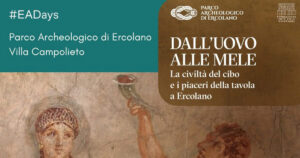Every corner of the globe has savored the delight of pizza. Born from the humble beginnings of Italy’s flatbread, tomatoes, and cheese, it was the Italian immigrants who carried this culinary gift to America in the early 20th century. The result? An all-American obsession with this Italian delicacy.
However, amidst the myriad of pizza types, one stands with a regal touch. Rewind to 1889, Naples. The city buzzed with excitement as Queen Margherita and her consort wandered its vibrant streets. Lured by an irresistible scent, they stumbled upon a quaint pizzeria.
Captivated, they summoned Raffaele Esposito, the pizzeria’s chef, to the majestic Capodimonte Palace. Eager to impress, Esposito whipped up three distinct pizzas. Yet, one was a showstopper – mirroring Italy’s flag with red tomatoes, white mozzarella, and verdant basil. Queen Margherita’s palate was conquered. In her honor, this tri-colored delight was christened “Pizza Margherita”.
Such an enchanting tale has charmed tourists, food enthusiasts, and historians. It paints a vivid picture: a queen, enchanted by a commoner’s dish, and a pizza embodying nationalistic fervor.
While parts of the tale are rooted in reality, like Esposito owning the aptly named “The Queen of Italy Pizzeria”, certain historical nuances add depth. The late 19th-century saw Italy in turmoil. Naples, freshly freed from its Bourbon ties, was still grappling with the new Kingdom of Italy’s demands. King Umberto I and Queen Margherita, aiming to bridge the divide, saw food as a powerful emblem. Hence, a pizza, drenched in the nation’s hues and graced by a queen’s preference, was more than a mere dish.
Cooking up a myth
But, was this just a culinary coup by the monarchy? Popular narratives suggest so. Yet, recent diggings hint otherwise. Evidences like an 1853 essay describing a similar pizza and discrepancies in the ‘royal letter’ to Esposito, challenge the popular belief.
It seems the plot thickens with Raffaele Esposito Brandi. A mismatched surname hints at the possibility of forgery. Could it be the work of the Brandi siblings, the later proprietors of the pizzeria? They might have woven this tale to boost their trade. After all, narratives of royals relishing street food were aplenty, even predating the alleged Margherita episode.
Today, the pizzeria stands tall as “Pizzeria Brandi”, its walls adorned with a commemorative plaque from 1989. The real tale behind Pizza Margherita might remain shrouded, but its allure is undeniable.
And, if this piece has stirred your appetite for Neapolitan wonders, book a Naples street food tour here and dive deep into its culinary heart.




